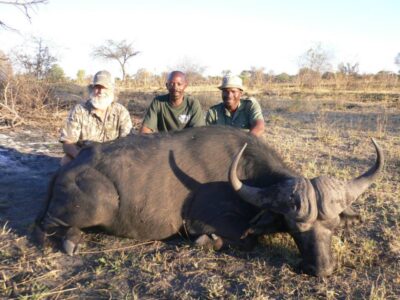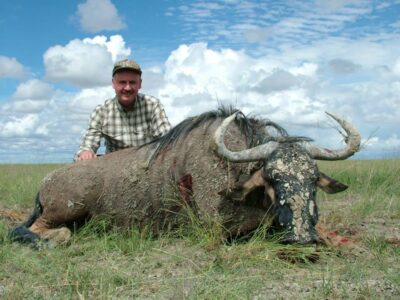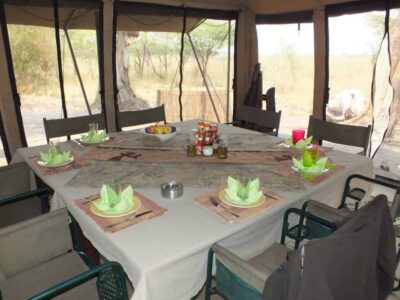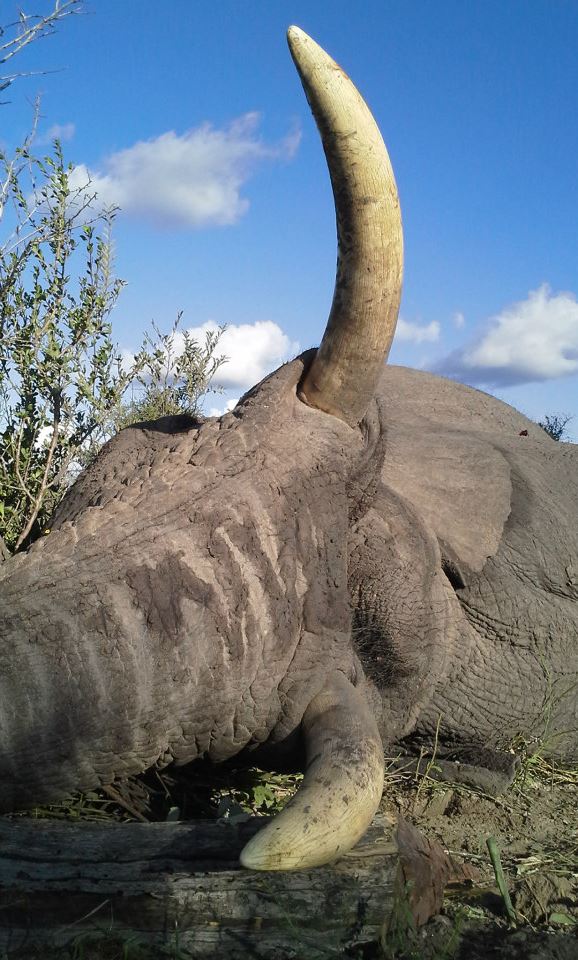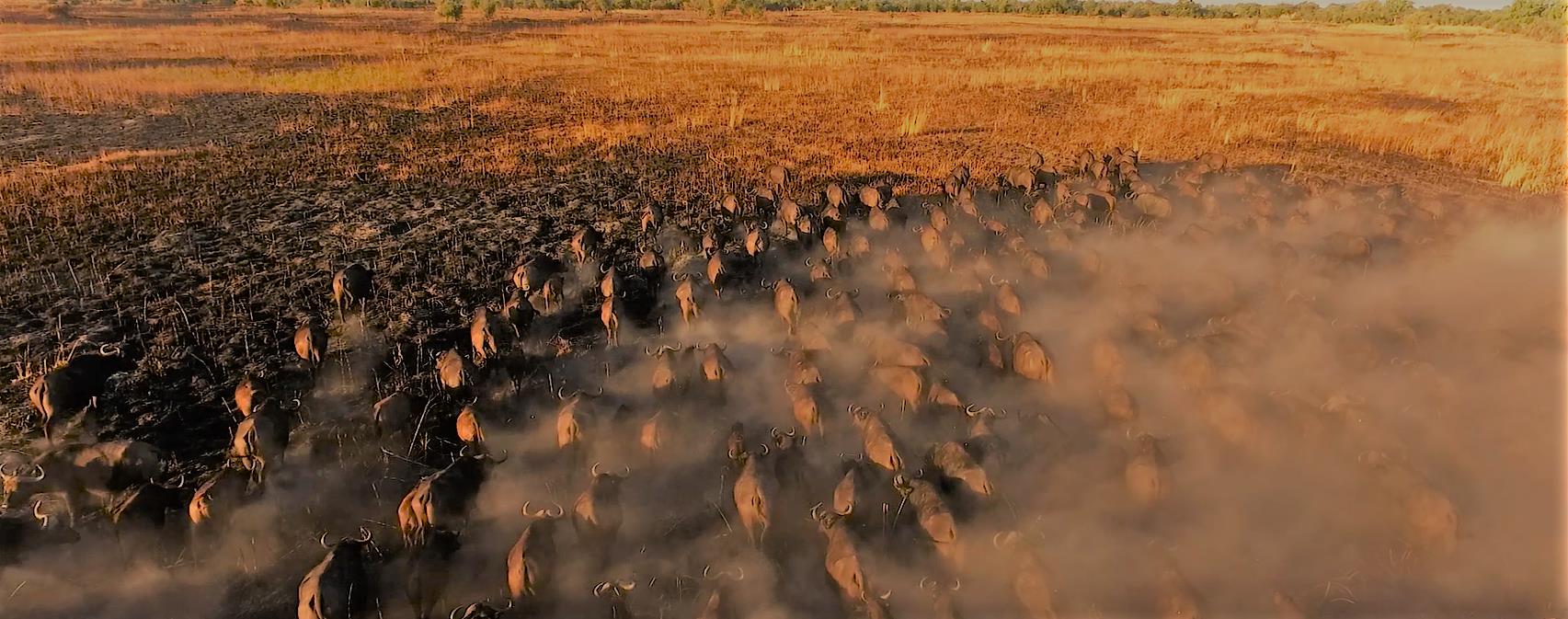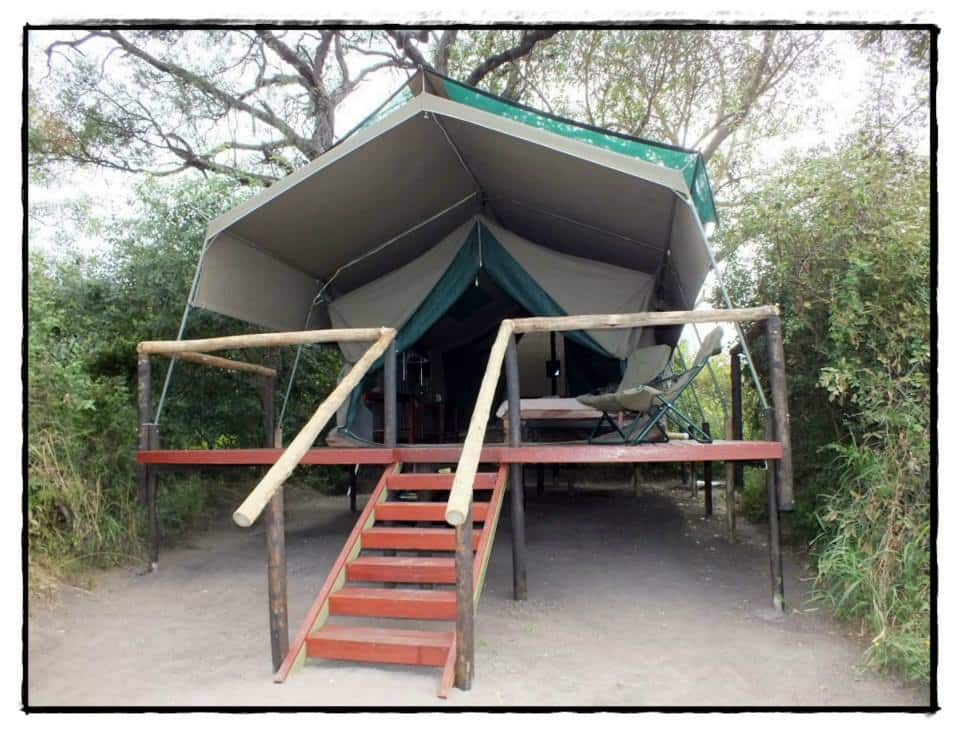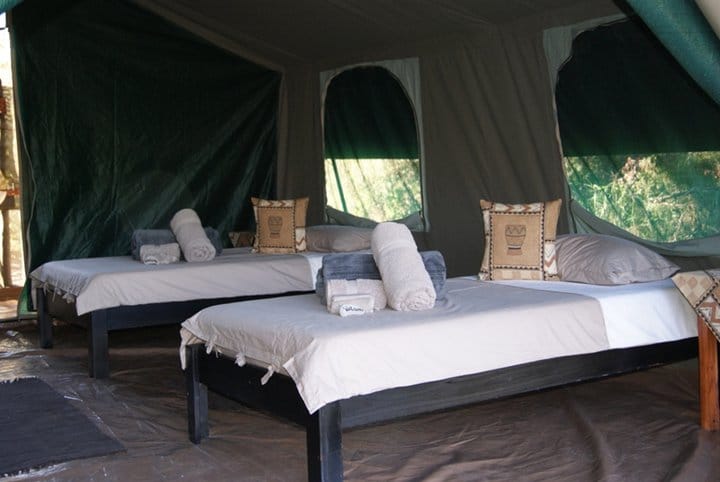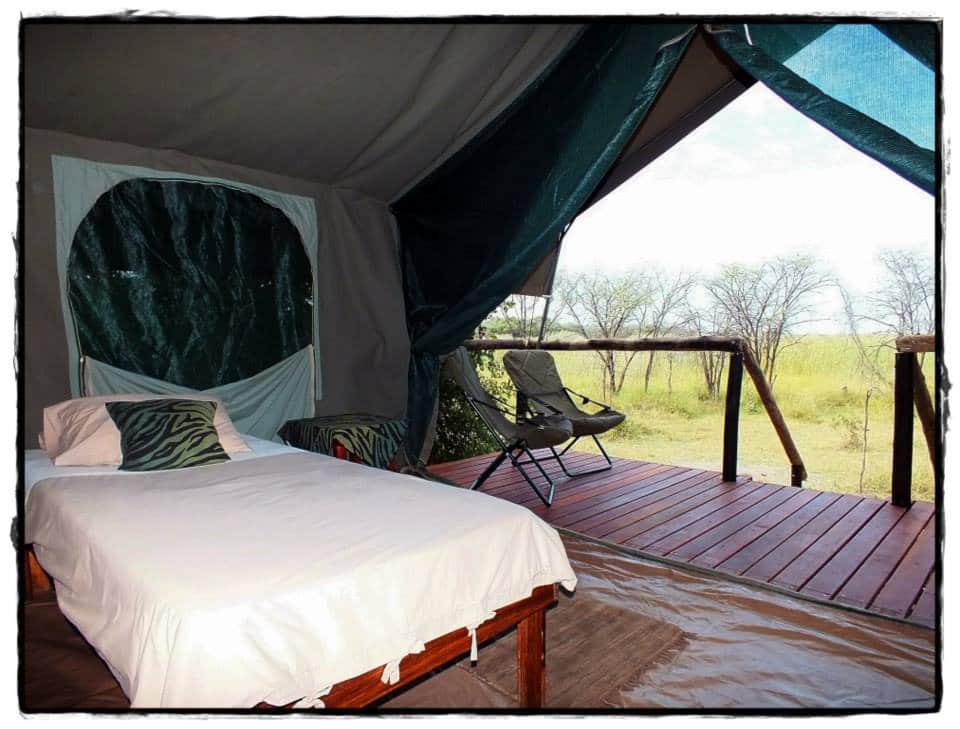13 days hunting for Trophy-Elephant, Cape Buffalo and Antelopes at Caprivi 1:1
This offer is not active at the moment.
Elephant, Cape Buffalo, Kudu, Zebra, Impala, Grey Duiker, Blue Wildebeest, Waterbuck, Eland, Reedbuck
13 days hunting for Trophy-Elephant, Cape Buffalo and Antelopes at Caprivi 1:1
This offer is not active at the moment.
Location: Caprivi, Namibia
From: Who is offering this hunt
Hunting time: 01. February - 30. November
Description:Elephant hunt: Many hunters dream of the day they can relive one of Africa's oldest hunting traditions of toting a double rifle over their shoulder and taking on a beast the size of a double decker bus. Elephant hunting is done mostly on foot by following promising fresh tracks ..more offer details
Other users also looked at the following:
Offer description
13 Tage Jagd auf Trophy-Elefant, Kaffernbüffel und Antilopen 1:1
Elefantenjagd:
Viele Jäger träumen von dem Tag, an dem sie eine der ältesten Jagdtraditionen Afrikas erleben können: eine Doppelbüchse über der Schulter zu tragen und einen Koloss von der Größe eines Doppeldeckerbusses zu strecken.
Die Elefantenjagd erfolgt meist zu Fuß, indem vielversprechende neue Spuren verfolgt werden, bis das Tier gesichtet wird. Es wird dann festgestellt, ob die Stoßzähne eine Trophäengröße haben oder nicht. Normalerweise besteht diese Art der Jagd aus Stunden des Gehens, nur um von einem großen Körper, aber kleinen Stoßzähnen enttäuscht zu werden. In den meisten Fällen ist eine Elefantenjagd ein psychologischer Kampf der Ausdauer, Geduld und Beharrlichkeit mit vielen Blasen, Sonnenbrand und Erschöpfung.
Der Schuss geschieht oft ziemlich schnell, normalerweise wird ein Gehirnschuss aus einem großen Kaliber mit schwerem Geschoß aus nächster Nähe empfohlen. Das Minimum Kaliber ist die .375 H & H, die in vielen Ländern gesetzlich vorgeschrieben ist. Die meisten Jäger bevorzugen etwas Schwereres wie .416 oder .458 Magnum aufwärts, wobei schwerere Doppelkugeln die beste Wahl sind.
Wenn man dem Elefanten gegenübersteht, ist ein frontaler Gehirnschuss einer der schwierigsten zu meisternden Schüsse. Das Gehirn, so groß wie ein American Football, liegt weit hinten im Schädel. Bei einem seitlichen Hirntreffer befindet sich das Gehirn vor dem Ohrloch, hinter dem Auge und etwas oberhalb des Zeugmatikbogens. Der eigentliche Zielpunkt für eine Treffer ins Gehirn ist sehr unterschiedlich in den verschiedenen Winkeln, den das Tier zum Zeitpunkt des Treffers hat.
Kurz gesagt, jede Art von Gehirnschuss auf einem Elefanten ist nicht einfach. Es gibt viele Dinge zu beachten, bevor Sie ihn antragen! Ein Breitseiten-Herz- / Lungen-Schuss ist eine bessere Entscheidung, wenn es schwierig ist, in die Nähe des Elefanten zu kommen, oder wenn es wenig Zeit gibt, den Schuss zu setzen.
Ein großer Elefantenbulle mit 100 Pfund Elfenbein Stoßzähnen wird von vielen als die ultimative afrikanische Trophäe angesehen, aber in diesen Tagen gilt alles über 40 Pfund noch als Trophäe Qualität.
Elefanten sind ständige Fresser, ruhen sich während der Hitze des Tages aus und sind zerstörerisch für ihren Lebensraum, wenn sie auf bestimmte Gebiete beschränkt sind und oft Hunderte von Bäumen zerstören. Ihr Einfluss erstreckt sich auch auf die Zerstörung des Lebensraums anderer Arten und schafft so ein ernsthaftes Dilemma für den Lebensraum und Naturschutz.
Trotz ihrer Größe sind Elefanten ihrem Status würdig und bieten eine der schwierigsten Jagdherausforderungen, die heute verfügbar sind.
Büffeljagd:
Nur wenige andere Wildtiere gelten als würdigerer Jagdgegner als der Afrikanische Kaffernbüffel. Der Nervenkitzel der Jagd auf diesen Berg von Muskeln und Attitüde ist unvergleichlich und macht süchtig. Büffel ähneln Rindern, da sie Herdentiere sind. Sie bevorzugen die offene Savanne, in der Weide und Wasser reichlich vorhanden sind. Sie neigen dazu, die kühleren Stunden des Tages vom frühen Morgen und Abend bis in die Nacht zu grasen und suchen Schatten, da es während des Tages heißer wird.
Büffel werden in der Regel zu Fuß gejagt und das macht sie gefährlich, besonders wenn sie verletzt oder gejagt werden. Oft verfolgen Tracker oder Wildhüter neue Spuren an Wasserstellen oder auf Straßen. Ältere Bullen neigen dazu, sich von den Herden zu trennen und kleine Junggesellengruppen zu bilden, die oft Dagga-Boys genannt werden (was Schlammjungen auf Suaheli bedeutet).
Im Caprivi verstecken sich diese großen Dagga-Boys tagsüber auf Inseln in der Dzoti-Jagdkonzession, umgeben von Sumpf und Schilf, bevor sie sich bei Einbruch der Nacht aufmachen, um die Maisernte der Einheimischen zu plündern. Unnötig zu sagen, dass die Einheimischen sehr daran interessiert sind, Jäger dafür zu finden, diese "Nachtschrecken" auszuschalten und sie mit frischem Fleisch zu versorgen !!
Die Jagd auf Büffel und ihre gefährliche Natur, wenn sie verwundet wurde, wurde von allen großen Jägern und verschiedenen Videoaufnahmen dokumentiert. ABER ACHTUNG - jede Situation ist einzigartig und Büffel sind eines der gefährlichsten Tiere, wenn sie verletzt werden. Trotz ihrer Größe sind sie extrem schnell und listig im Verstecken, da sie absolut ruhig bleiben, bis die Jäger direkt auf ihnen sind.
Die meisten PHs schwören auf die .375 H & H als Ausgangspunkt, wobei die .416s und .458s ein guter Kompromiss in Bezug auf Preis und Leistung sind. Einige Jäger werden für den ersten Schuss eine Teilmantel Patrone laden, gefolgt von harten Geschoßen, wenn das Tier abspringt. Erinnern Sie sich daran, dass Sie mit Ihrem ersten Schuss so viel Schaden wie möglich anrichten wollen, und dass schwere, weiche Geschosse von guter Qualität unerlässlich sind.
Beim Büffeljagen kann man jedoch nie eine zu große Waffe haben, vorausgesetzt, dass Sie als Jäger den Rückstoß mit Zuversicht bewältigen können. Wenn Sie es sich leisten können, wäre eine gut geölte glänzende Doppelbüchse mit 500 Gramm Blei die bevorzugte Wahl.
Das Trophäengrößenurteil auf Büffel ist ziemlich einfach, bleibt aber eine individuelle Geschmacksache. Alte einsame Bullen haben normalerweise Hörner von charakteristischen knorrigen Bossen getragen. Die schiere Bedrohung und Präsenz dieser schlecht gelaunten alten Jungs ist eine ausgezeichnete Jagd und eine wohlverdiente Trophäe.
Elephant hunt:
Many hunters dream of the day they can relive one of Africa's oldest hunting traditions of toting a double rifle over their shoulder and taking on a beast the size of a double decker bus.
Elephant hunting is done mostly on foot by following promising fresh tracks until the animal is sighted. It is then determined if the tusks are of trophy size or not. Usually this type of hunting involves hours of walking only to be disappointed by a large bodied but small tusked bull. In most cases, an Elephant hunt is a psychological battle of endurance, patience and persistence with many blisters, sunburn and exhaustion.
The shooting part of the hunt is fairly quick, usually a brain shot is recommended at close quarters with heavy grain solids from a large bore calibre. The minimum is the .375 H & H which is a legal requirement in many countries. Most hunters prefer something heavier starting from .416 or .458 Magnum upwards with heavier double rifles being the best choice.
When facing the Elephant a frontal brain shot is one of the most difficult shots to master. The brain, the size of an American football, is situated well back in the skull. With a side brain shot, the brain is situated in front of the ear hole, behind the eye and slightly above the zeugmatic arch. The actual point to aim at, for a brain shot differs tremendously at the different angles the animal holds his head at the time of the shot.
In short, any sort of brain shot on an Elephant is not easy. There are many things to consider before taking it! A broadsided heart / lung shot is a better bet when it is difficult to get in close to the elephant or there is little time to take the shot.
A big bull Elephant with 100 pound ivory tusks is considered by many as the ultimate African trophy, but these days anything over 40 pounds is still considered trophy quality.
They are continual feeders, resting during the heat of the day and are destructive to their habitat if confined to certain areas, often destroying hundreds of trees. Their impact extends to the destruction of the habitat of other species as well, thus creating a serious dilemma for conservationists.
Despite their size, Elephants are worthy of their status and offer one of the most arduous hunting challenges available today.
Buffalo hunt:
Few other game animals are held in higher esteem as a worthy hunting adversary than the African Cape Buffalo. The sheer thrill of hunting this mountain of muscle and attitude is unrivalled and quite addictive. Buffalo are similar to cattle in that they are herd animals, preferring the open savannah where grazing and water is plentiful. They tend to graze the cooler parts of the day from early morning and evening into the night and seeking shade as it gets hotter during the day.
Buffalo are generally hunted on foot and this is what makes them dangerous, particularly when wounded or chased. Often trackers or game scouts will pick up fresh tracks at waterhole's or across roads. Older bulls tend to separate from the herds and form small bachelor groups often called Dagga boys (meaning mud boys in Swahili).
In the Caprivi, these big Dagga boys love to hide up during the day on islands in the Dzoti hunting concession, surrounded by swamp and reeds, before venturing out as night falls, to raid the locals maize crops. Needless to say the local people are very keen for paying hunters to take out these night raiders and provide them with fresh meat!!
Buffalo hunting and their dangerous nature when wounded has been documented by all the great white hunters and on various video footage. BUT BE WARNED - each situation is unique and buffalo are one of the most dangerous animals when wounded. Despite their size they are extremely quick and cunning at hiding, as they remain absolutely still until the hunters are right upon them.
Most PHs swear by the .375 H & H as a starting point, with the .416s & .458s being a good compromise on price and power. Some hunters will load a soft-nosed round for the first shot, followed by solids as the animal moves off. Remember, you want to do as much damage as possible with your first shot and heavy grained, good quality soft-nosed bullets are essential.
However, with Buffalo you can never have too much gun, provided that you the hunter, can handle the recoil with confidence. If you can afford it, a well oiled gleaming double rifle packing 500 grains of lead would be the classic preferred choice.
Trophy size judgment on buffalo is quite easy but remains an individual choice. Old lone bulls usually have worn horns with characteristic gnarled bosses. The sheer menace and presence of these bad-tempered old boys make for an excellent hunt and well-deserved trophy.
Territory information
Additional information: The Eastern Caprivi is an oasis for elephant and Buffalos, with rivers like the mighty Zambezi, Chobe, Kwando and Linyanti. Mamili National Park is the largest wetland area in Namibia that enjoys conservation status and so creating a protected zone for the fauna and flora living in this lush, complex marshland. Dzoti hunting concession is one of the youngest registered conservancies but definitely one of the most promising Elephant hunting areas in Namibia. The area comprises of 250 km² and borders directly with three major National Parks. Contrary to popular opinion, Elephant hunting is not illegal and is permitted in African countries like Namibia, where their populations are stable, adequately protected and well managed. The biggest threat they face is not from trophy hunting, but from human encroachment into their habitat. You will be welcomed on arrival at the airport, by the professional hunter and escorted to the hunting territory. Shortly after arrival in the territory, you will visit the shooting range to prepare and check all equipment for the hunt. After the hunt it is possible to visit Swakopmund or Windhoek for some shopping and then the journey home starts.
Trophy fee
per 1 animal(s)
per 1 animal(s)
per 1 animal(s)
per 1 animal(s)
per 1 animal(s)
per 1 animal(s)
per 1 animal(s)
per 1 animal(s)
per 1 animal(s)
per 1 animal(s)
Travel date
0 chosen hunting day(s)
0 additional travel day(s)
Sum: 0 days with 0 overnights
Your selected travel date
01.02.2026
(Arrival day)30.11.2026
(Departure day)Daily rate and accommodation
Facilities:
More information: Breakfast is usually before sunrise, where after you will go hunting with your professional hunter, tracker and driver. You will be driving spotting game and do some stalks on animals that you have on your wish list. When the animals start hanging around in the shade during the hotter time of the day, you will be heading back to the camp. Where you will enjoy a good lunch and have some time off from the normal hunting activities. In the after noon you will be heading out into the bush until sunset. During your drive back to camp it will be dark, which means temperatures drop and it could really become cold.
€ 1.500,-
persons
€ 310,-
persons
Daily rates total for HUNTING DAY(S): € ,-
Other costs:
Transport and hotel for arrival and depature per person
Transfer:
Trophy treatment:
We normally ship trophies by airfreight within four weeks after completion of your safari. Your trophies should reach their destination within two months from that date. Taxidermy prices in Namibia are very affordable and the quality and workmanship is very good. Financially there is very little difference between the cost of shipping raw trophies or mounted ones. The normal completion time to mount trophies is approximately 8 – 10 months.
Shooting distances:
-
Caliber recommendation:
-
Missed shot:
0 % of the estimated trophy price
Payment:
Deposit: 50 % of the total price
Final payment: On site
Wounding:
100 % of the estimated trophy price
Wounded game is considered as harvested, when it can't be found after a professional, conscientious and thorough search.
Cancellation:
Deposits are non-refundable
Included in the offer:
- Accommodation
- Full board
- Snacks
- Tee / Coffee
- Beverages
- Hunting licence
- Guidance
- Trophy treatment
- Transportation in territory
- Transportation from/to airport/railway station
NOT included in the offer:
- Gun rental
- Taxidermist
- Trophy export
- Tips


